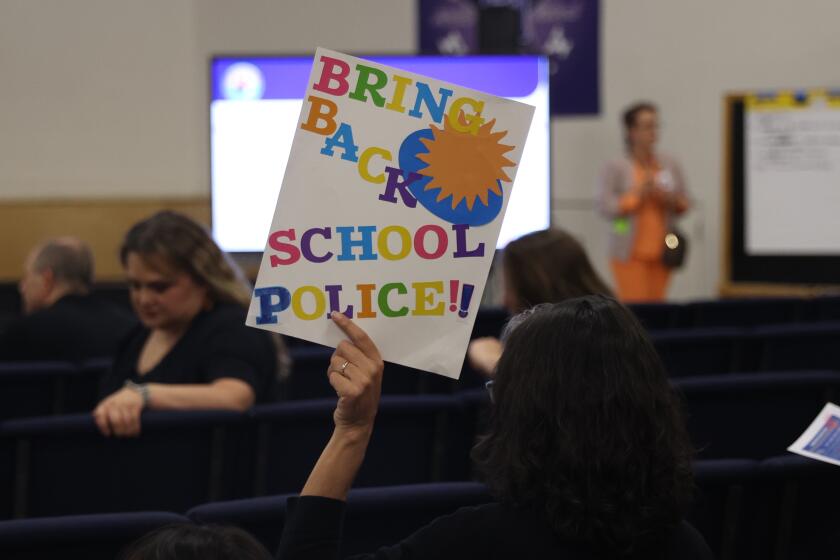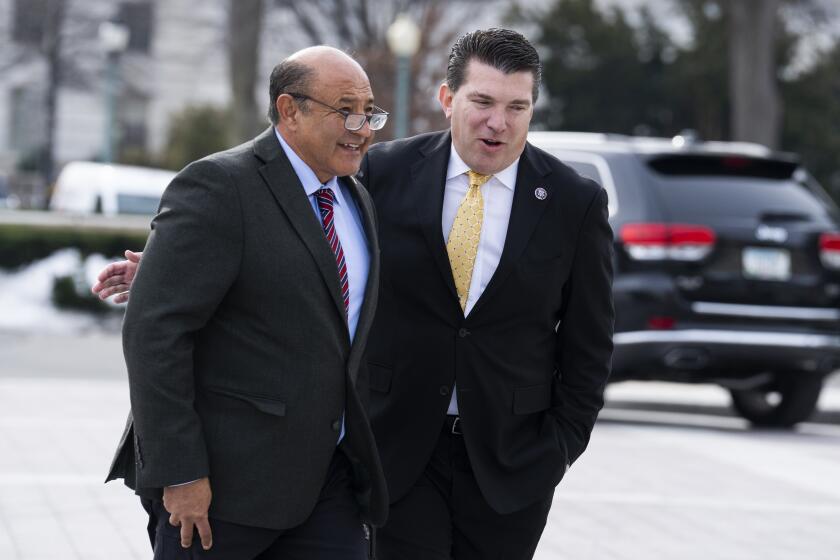California weighing cost of running federal programs during shutdown
SACRAMENTO — Facing the prospect of a prolonged federal government shutdown, Gov. Jerry Brown will soon need to decide if the state will shoulder the cost to keep running federal programs used by millions of Californians.
State officials say there’s no guarantee that critical social services in California — such as food stamps, subsidized school meals and nutrition assistance for pregnant women and infants — could run without interruption in November.
The Brown administration has not yet said if it plans to plug the gaps for social programs at the end of the month.
“In terms of where we sit today, it’d be premature to speculate,” said H.D. Palmer, spokesman for Brown’s Department of Finance. He said the department is continuing to evaluate potential impacts of the shutdown, which began Oct. 1.
There’s also an element of political strategy at play, with California and other states hesitant to signal too early they’d step in for the federal government and mitigate the shutdown’s impact.
Brown, at a bill signing last week, called the shutdown “disquieting” and said he would put the pressure on the federal government to end the spending standoff.
“California is going to make it. This is a place that was around before Washington was even created,” Brown said. “So there’s a power here and I’m going to do everything I can to wake up the folks in Congress.”
But advocates, fearing confusion and anxiety from those who participate in the assistance programs, are prodding state officials to dispel the uncertainty and announce if the state plans to intervene.
“We’re hoping the governor would step out on this and say people will get their benefits,” said Mike Herald, a lobbyist at the Western Center on Law and Poverty. “I can imagine the reluctance the administration would have to do that. It’s a lot of money.”
“None of these are easy calls or decisions,” Herald added. “On the other hand, people are starving.”
The state Legislature, which is on break until January, would have to reconvene to appropriate additional money for the programs, said Mark Hedlund, spokesman for Senate Leader Darrell Steinberg (D-Sacramento).
“We’re not talking about doing that at this point,” he added.
But it is unclear if California has the ability — and political will — to draw substantial funds out of the state’s recovering budget to serve as a stopgap.
Food stamp benefits, which are collected by 4.7 million people on average each month, would cost at least $640 million per month, according to the figures issued by the state Department of Social Services. The WIC program, which provides food vouchers for pregnant women, infants and young children, costs an average of $87.5 million per month to serve around 1.4 million participants, according to estimates by the California Department of Public Health.
It would be difficult for California officials to replace federal money with state funds.
Although the current budget includes a $1.1 billion reserve, roughly a third could be dedicated to help alleviate prison overcrowding. More of the reserve could be drained if California tax revenue trails projections — so far it’s 2.1% behind, according to a September report.
State officials could borrow money, but former finance director Mike Genest doesn’t recommend it.
“It would be very bad practice to backstop a federal obligation,” he said. “It’s never been contemplated. I have a hard time believing it would be contemplated.”
Laurie True, executive director of the advocacy group California WIC Assn., said the possibility of using the California’s money to cover WIC costs “seemed like a third rail” in her conversations with state public health officials.
“I brought it up, but no one thinks it’s feasible,” True said. Part of the concern, she said, is the lack of clarity if the federal government would reimburse the state once the shutdown ends.
The issue comes at a difficult time for states whose budgets remain fragile after the country’s recession, said Ron Haskins, a senior fellow at the Brookings Institution in Washington. Covering the cost of federal programs is a tall order.
“If they don’t have the money, how would they do it?” he said.
Arizona, for example, announced at the onset of the shutdown that thousands of recipients of the federally funded welfare program Temporary Assistance for Needy Families would not be getting their cash aid.
Gov. Jan Brewer announced Monday her administration would redirect state funds to restore the welfare payments. But she warned in a statement that Arizona would face “catastrophic budgetary challenges and choices” if the federal shutdown continued into next month.
“Simply put, Arizona cannot afford to pay the federal government’s bills,” Brewer said.
It’s not just the state government that may be called upon to pick up Congress’ slack. Local school districts administer the federal school nutrition program, which provides an average of 4.5 million meals per day in California.
“If the funds don’t come out to school districts for reimbursement, then school districts have a decision to make: either to continue the program and dip into their reserves, make cuts and adjustments to other parts of the program, or possibly discontinue the program,” said Dennis Meyers, who heads government relations for the California School Board Assn.
Cathy Senderling-McDonald, deputy executive director of the County Welfare Directors Assn., said the sooner the Brown administration can shed light on next month’s outlook for programs like food stamps, the better.
“We will need to know with enough time to field the questions that will start to come,” she said. “The closer we get to November, the more we will likely have a problem.”
More to Read
Start your day right
Sign up for Essential California for news, features and recommendations from the L.A. Times and beyond in your inbox six days a week.
You may occasionally receive promotional content from the Los Angeles Times.








